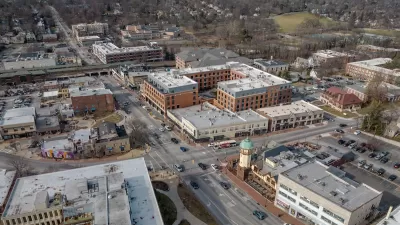Vancouver will attempt to address urban clutter with innovative multifunctional utility poles that house Wi-Fi and telecom services, as well as other amenities, designed by none other than famed novelist Douglas Coupland.
For many cities, streetscapes have developed into nothing short of obstacle courses for pedestrians. They are often thoughtlessly littered with amenities like parking meters, street lights, telephone poles, and cell towers.
One city--Vancouver, British Columbia--will soon attempt to de-clutter its sidewalks when it introduces the V-Pole (V for Vancouver). V-Poles are LED street lights that will house Wi-Fi and telecom services, link to charging stations for electric cars, and serve as parking payment stations.
With Vancouver's downtown inundated with a "forest" of cell towers from five major mobile carriers, novelist and visual artist Douglas Coupland saw an opportunity to change that. He worked with with Bell Labs and telecommunications giant Alcatel-Lucent to scale down telecom services into the more aesthetically pleasing V-pole.
With a need for new LED street lights and parking kiosks, Vancouver officials saw an opportunity to capitalize on the V-Pole. Add Wi-Fi and you have the Swiss Army Knife of utility poles.
What is more, the V-Pole is open source, so any city can develop a version of its own, incorporating services and technology deemed appropriate. The V-Pole's versatility and open source availability, and the increasing ubiquity of smartphones makes it a safe bet that other cities will follow Vancouver's lead by installing V-Poles of their own.
Who knows? Perhaps some day urban clutter will be a thing of the past
Thanks to Joe Batcheller
FULL STORY: Douglas Coupland-created ‘V-Pole’ may take high tech to the streets in Vancouver

Maui's Vacation Rental Debate Turns Ugly
Verbal attacks, misinformation campaigns and fistfights plague a high-stakes debate to convert thousands of vacation rentals into long-term housing.

Planetizen Federal Action Tracker
A weekly monitor of how Trump’s orders and actions are impacting planners and planning in America.

Chicago’s Ghost Rails
Just beneath the surface of the modern city lie the remnants of its expansive early 20th-century streetcar system.

Bend, Oregon Zoning Reforms Prioritize Small-Scale Housing
The city altered its zoning code to allow multi-family housing and eliminated parking mandates citywide.

Amtrak Cutting Jobs, Funding to High-Speed Rail
The agency plans to cut 10 percent of its workforce and has confirmed it will not fund new high-speed rail projects.

LA Denies Basic Services to Unhoused Residents
The city has repeatedly failed to respond to requests for trash pickup at encampment sites, and eliminated a program that provided mobile showers and toilets.
Urban Design for Planners 1: Software Tools
This six-course series explores essential urban design concepts using open source software and equips planners with the tools they need to participate fully in the urban design process.
Planning for Universal Design
Learn the tools for implementing Universal Design in planning regulations.
planning NEXT
Appalachian Highlands Housing Partners
Mpact (founded as Rail~Volution)
City of Camden Redevelopment Agency
City of Astoria
City of Portland
City of Laramie




























